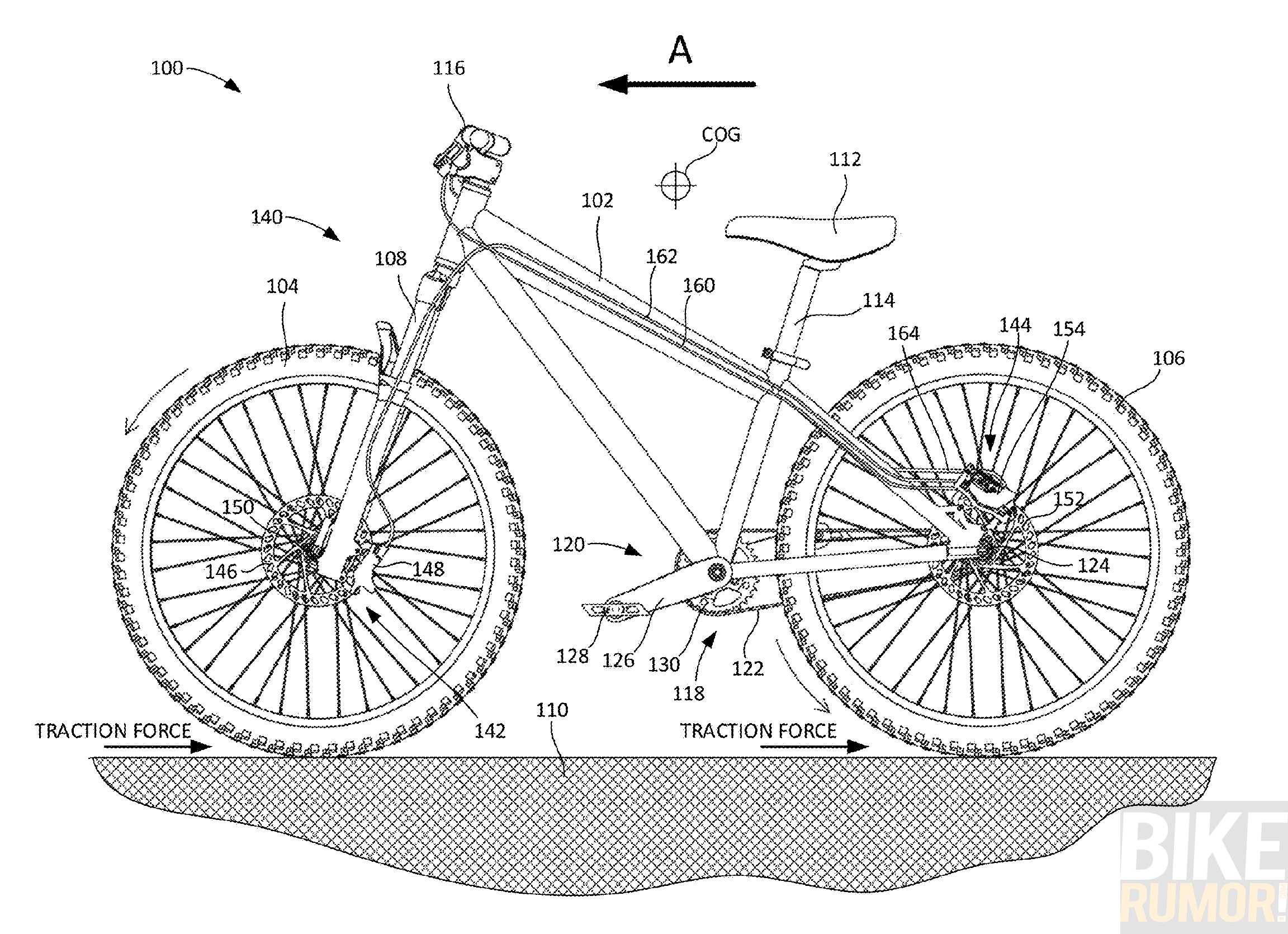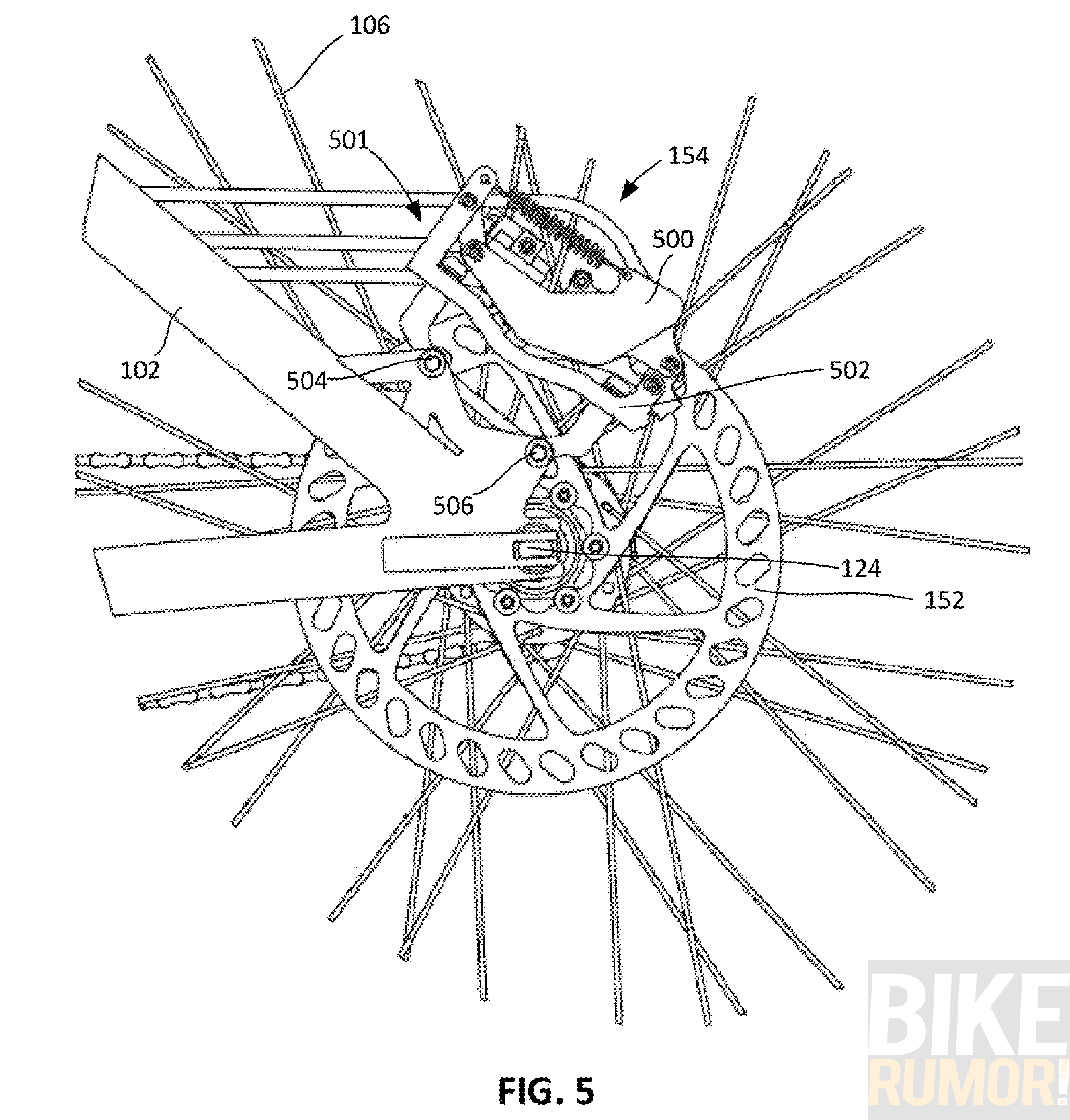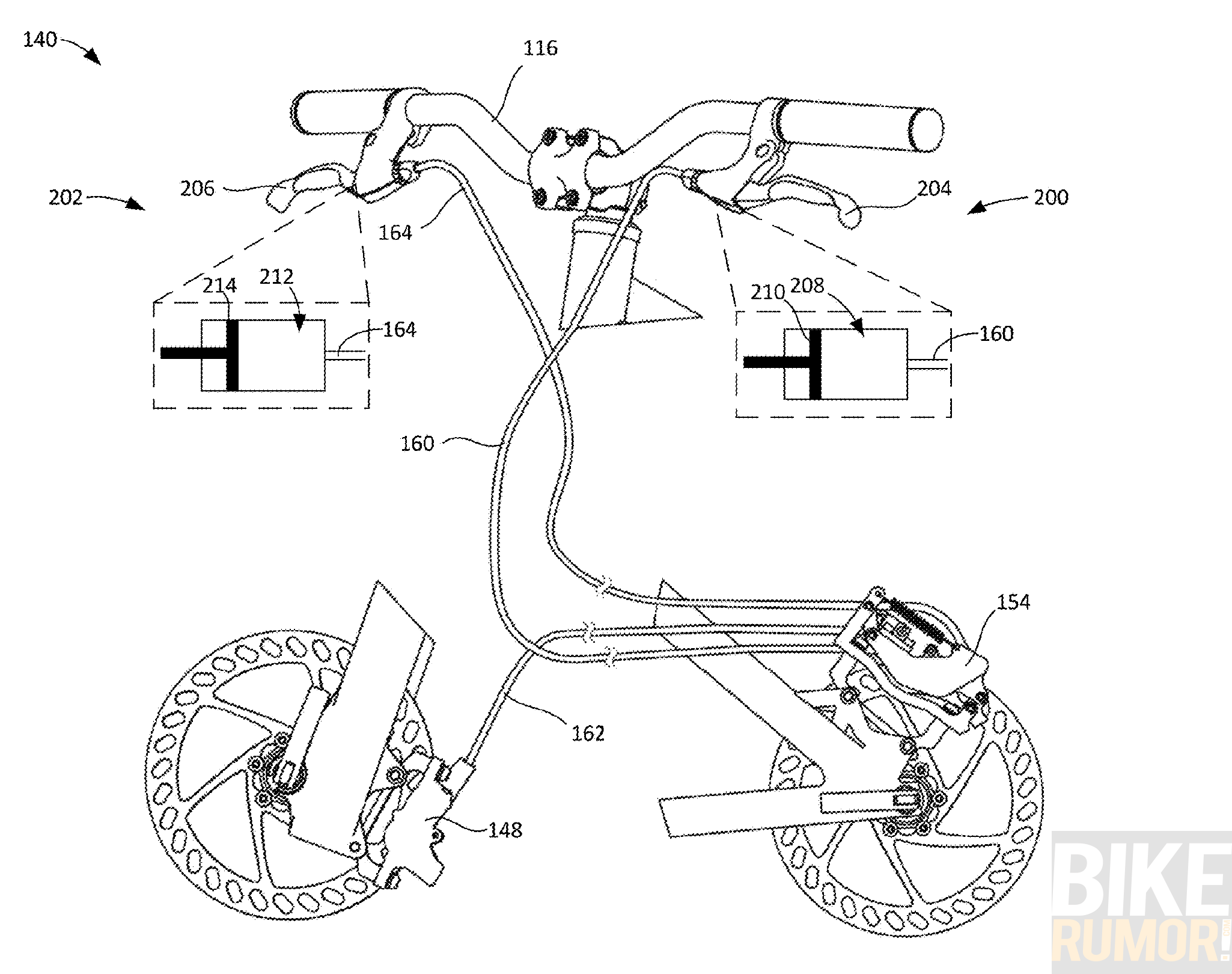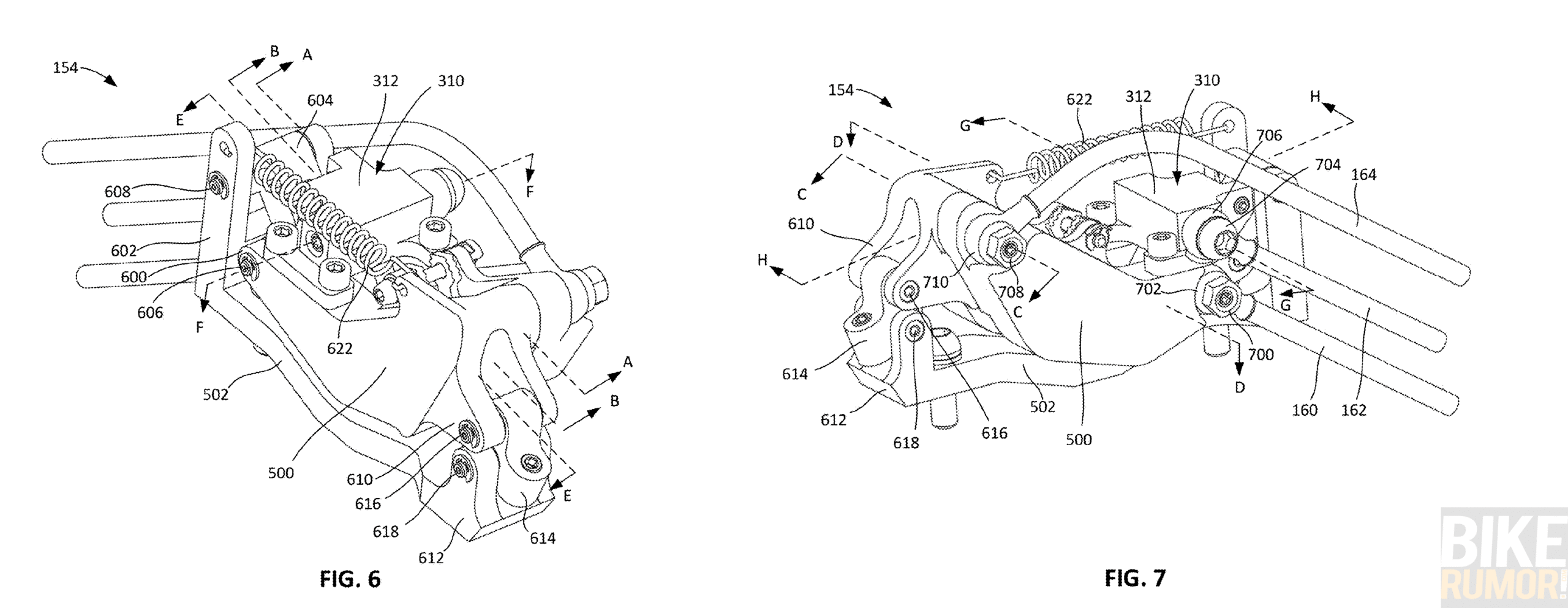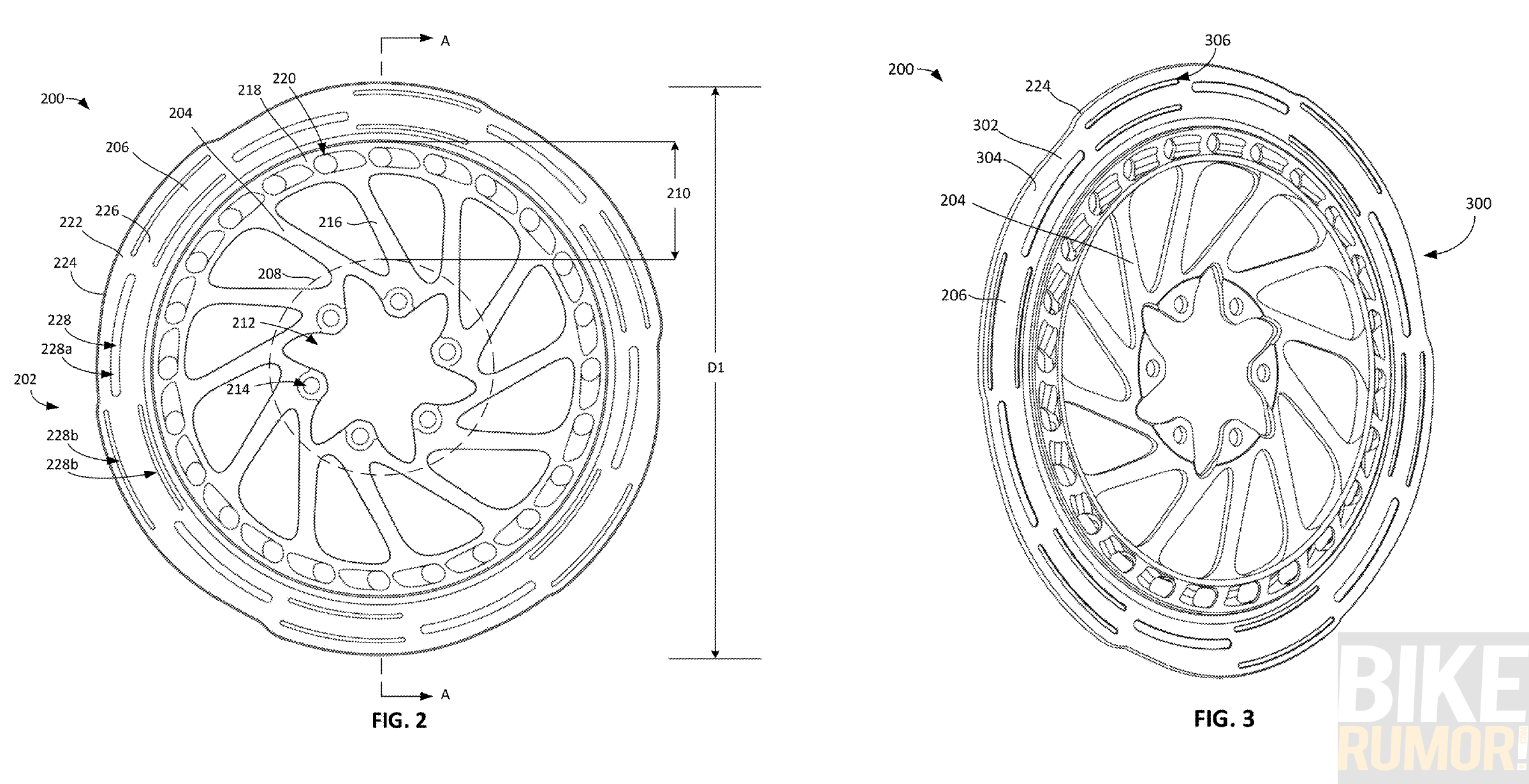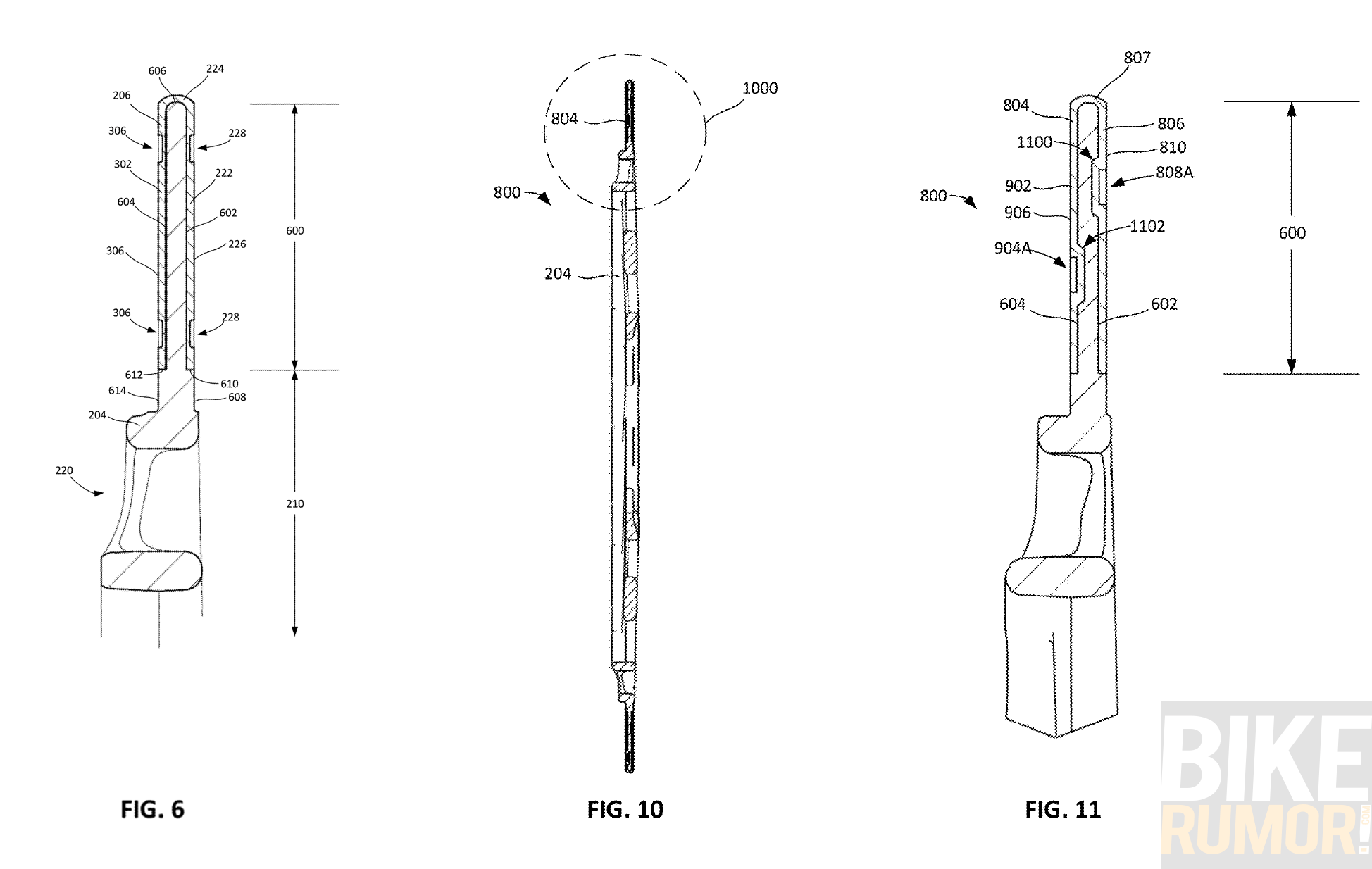This week, it’s all about brakes, with a new anti-pitch/anti-dive system and premium disc brake rotor design from SRAM.
Starting with the bigger story, their anti-pitch patent application shows a system that runs both levers’ hydraulic brake lines through the rear rotor, with the “front” lever actuating both brakes and the rear caliper moderating how much pressure the front caliper applies to the front rotor.
The idea is simple: Prevent riders from going over the bar. The execution is anything but simple.
Well, actually, the concept behind it is pretty simple, but the spring-loaded rear caliper mount and three-hosed layout isn’t. Here’s how it works…
The rear brake lever (aka “right” lever for most of the world) operates the rear brake like normal. The front brake (“left”) lever becomes a dual-use lever that operates both calipers simultaneously.
Pull it and it pushes fluid to the rear caliper first, actuating the rear brake. As the rear brake pads contact the rotor, that friction rotates the caliper forward slightly. This rotation opens a valve that allows fluid to move to the front brake caliper and actuate the front brake, too.
Where the safety brake magic happens is when the rider grabs too much brake. Normally, if we tried to brake too hard with the front brake (like, in an emergency situation), the front wheel would lock up and the rear wheel would lift off the ground. Affectionally known as an endo, the rider would likely go over the handlebars and be hurt.
SRAM’s anti-pitch braking system eliminates this by preventing an endo.
How? By immediately cutting off brake force to the front wheel as soon as the rear wheel lifts off the ground. Because the rear caliper’s rotation (the rotation that would open up flow to the front and actuate the front wheel) is dependant on the rear caliper spinning forward, as soon as the rear wheel lifts off the ground the rear brake would stop it from spinning.

As soon as it stops, the caliper pulls back, shutting off flow to the front brake and opening it up…thus reducing or eliminating front braking power.
And as soon as the front wheel isn’t braking, the rear would immediately drop back to the ground. In reality, it would happen so quickly that you’d barely get the rear tire off the ground…certainly not enough to launch yourself over the handlebars.
Uses for SRAM’s Anti-Pitch hydraulic brakes
Let’s be real…it’s a bit of a cumbersome design for a performance bike. And performance riders at even the most basic level are using front and rear braking as part of their bike handling. So it’s not likely to see use on our road, gravel and mountain bikes.
But for commuters? City bikes and e-bikes? Definitely.
OK, so what about that spring? It appears to be pulling the caliper forward, into the “open” position such that fluid would flow to the front brake. Which seems counter intuitive, in that we’d want it to be closed so that when there’s no forward rotation of the caliper during braking, it would remain closed, right?
Well, the patent says the spring is there to “preferentially bias” the caliper towards the open position, but it’s not strong enough to actually pull it open. Buried somewhere in the patent is, I’m sure, an explanation for how the caliper resists that force but, honestly, it’s enough to know that it does. And that the design allows for other iterations of biasing springs (like at 614) in lieu of a big ugly coil on top of the caliper.
Presumably, pulling the rear brake (right hand) lever would only activate the rear brake like normal. So, you know, we can still do some sick skids.
SRAM one-piece, dual-layer brake rotor
Currently, SRAM’s brake rotors come in two varieties…full one-piece steel Paceline rotors, and their lighter two-piece Centerline XR rotors with an alloy carrier and steel brake track.
Brake tracks are generally stainless steel because it has the best durability, but aluminum dissipates heat better. To get both materials into a rotor, SRAM has thus far relied on a two-piece design that uses an alloy center section (carrier) with a steel rotor pinned or riveted to it. Those offer great braking and heat management, but they’re heavier than the simple, all-steel one-piece design.
Their proposed solution in this patent is to spray molten stainless steel onto an aluminum carrier, creating a one-piece design with all the heat management benefits of a two-piece design.
The process is supposedly quite advanced (and expensive), but yields a very lightweight rotor. SRAM’s patent application shows additional design features, like air scoops, to maximize airflow over the surface and shed heat even faster. Slots and grooves add more surface area, and should help keep the rotors clean and dry, too.
We’re guessing these could produce some of the lightest rotors around, but also probably some of the most expensive.
Patent research assistance provided by Wheelbased.com. Check them out for deeper dives on some of these patents and more.
